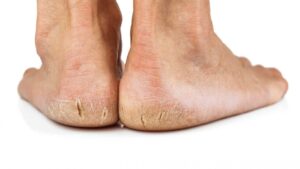Experiencing pain on the top of your foot can be frustrating and impact your ability to walk, exercise, and carry out daily activities. This type of discomfort may develop suddenly due to an injury or progress gradually as a result of underlying conditions. Understanding the causes, treatment options, and preventive measures for top-of-foot pain is essential for maintaining foot health and overall well-being.
Common Causes of Pain on the Top of the Foot
Pain dorsal (top) aspect of the foot can stem from various factors, ranging from minor injuries to more serious medical conditions. Below are some of the most common causes:
1. Extensor Tendonitis
The extensor tendons run along the top of the foot and are responsible for lifting the toes. Overuse, wearing tight shoes, or excessive exercise can lead to inflammation of these tendons, resulting in pain and swelling.
2. Stress Fractures
Small cracks in the bones of the foot, known as stress fractures, can occur due to repetitive impact from activities like running, jumping, or prolonged standing. These fractures often cause pain and tenderness that worsens with activity.
3. Nerve Compression (Pinched Nerve)
Compression of the nerves in the foot, such as the deep peroneal nerve or Morton’s Neuroma can cause pain, tingling, or numbness on the top of the foot. This can be a result of tight footwear, swelling, or repetitive movements.
4. Arthritis
Osteoarthritis and rheumatoid arthritis can cause joint pain and stiffness in the foot. The midfoot joints, located on the top of the foot, can be affected, leading to discomfort and difficulty with mobility.
5. Ganglion Cysts
Fluid-filled lumps known as ganglion cysts can develop on the tendons or joints of the foot. While they are usually harmless, they can cause pain and discomfort if they press against nearby nerves.
6. Tight Footwear
Shoes that are too tight or have rigid uppers can put pressure on the top of the foot, leading to pain and inflammation. This is particularly common among individuals who wear ill-fitting work boots, high heels, or restrictive athletic shoes.
7. Midfoot Injury (Lisfranc Injury)
A Lisfranc injury occurs when the ligaments or bones in the midfoot are damaged, often due to twisting motions or heavy impact. This injury can be severe and requires prompt medical attention.
8. Gout
Gout is a form of arthritis caused by the buildup of uric acid crystals in the joints. It often affects the big toe but can also cause pain in the midfoot region, including the top of the foot.
Treatment Options for Top-of-Foot Pain
The appropriate treatment for top-of-foot pain depends on the underlying cause. Below are some common treatment methods:
1. Rest and Ice Therapy
If pain is due to overuse or minor injuries, resting the foot and applying ice packs can help reduce swelling and inflammation.
2. Proper Footwear
Wearing supportive, well-fitted shoes with a roomy toe box can prevent unnecessary pressure on the top of the foot. Custom orthotics may also provide additional support.
3. Orthotics
Prescription orthotics can help but addressing abnormal gait patterns and reducing compression at the top of the foot.
4. Stretching and Strengthening Exercises
Gentle foot and calf stretches can relieve tension in the extensor tendons and improve flexibility. Strengthening exercises can also help prevent future injuries.
5. Compression and Elevation
If swelling is present, using a compression bandage and keeping the foot elevated can help reduce inflammation and discomfort.
6. Physical Therapy
A podiatrist or physiotherapist can recommend targeted exercises and treatments to address specific foot issues and improve mobility.
7. Corticosteroid Injections
For severe inflammation, corticosteroid injections may be recommended to provide relief, particularly in cases of arthritis or nerve compression.
8. Surgery (If Necessary)
In rare cases where conservative treatments fail, surgical intervention may be required, such as in the case of severe arthritis, nerve compression, or fractures.
Preventing Pain on the Top of the Foot
While some causes of foot pain are unavoidable, there are several steps you can take to reduce your risk:
- Choose Supportive Footwear: Avoid tight or rigid shoes and opt for options with proper arch support and cushioning.
- Gradually Increase Activity Levels: Avoid overloading your feet with sudden increases in exercise intensity.
- Maintain a Healthy Weight: Excess weight puts additional strain on the feet, increasing the risk of foot pain.
- Stretch and Strengthen Your Feet: Regular stretching and strengthening exercises can improve foot flexibility and resilience.
- Monitor Foot Health: If you notice any lumps, swelling, or persistent pain, consult a podiatrist promptly to prevent complications.
When to See a Podiatrist
If you experience persistent pain on the top of your foot that does not improve with rest or home treatments, it is important to seek professional care. A podiatrist can assess the condition, provide an accurate diagnosis, and recommend appropriate treatment to relieve pain and prevent further issues.
At ModPod Podiatry, our expert team is dedicated to diagnosing and treating all types of foot pain, including top-of-foot discomfort. We offer tailored treatment plans to help you regain comfort and mobility. If you’re struggling with foot pain, book an appointment today and take the first step towards relief.










